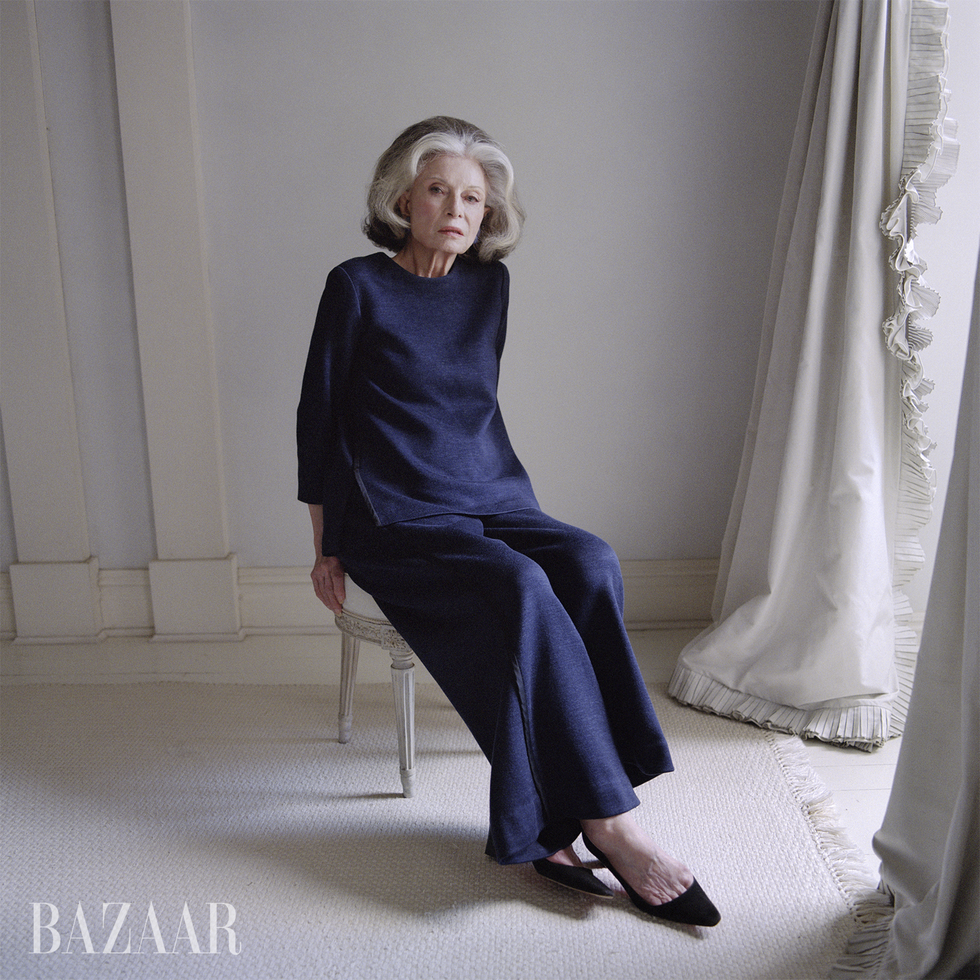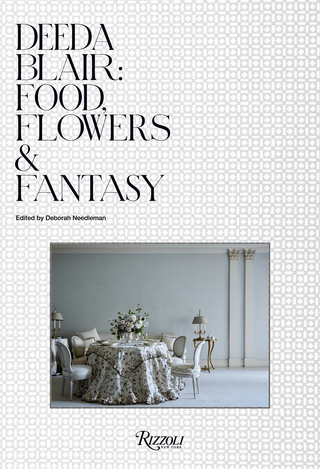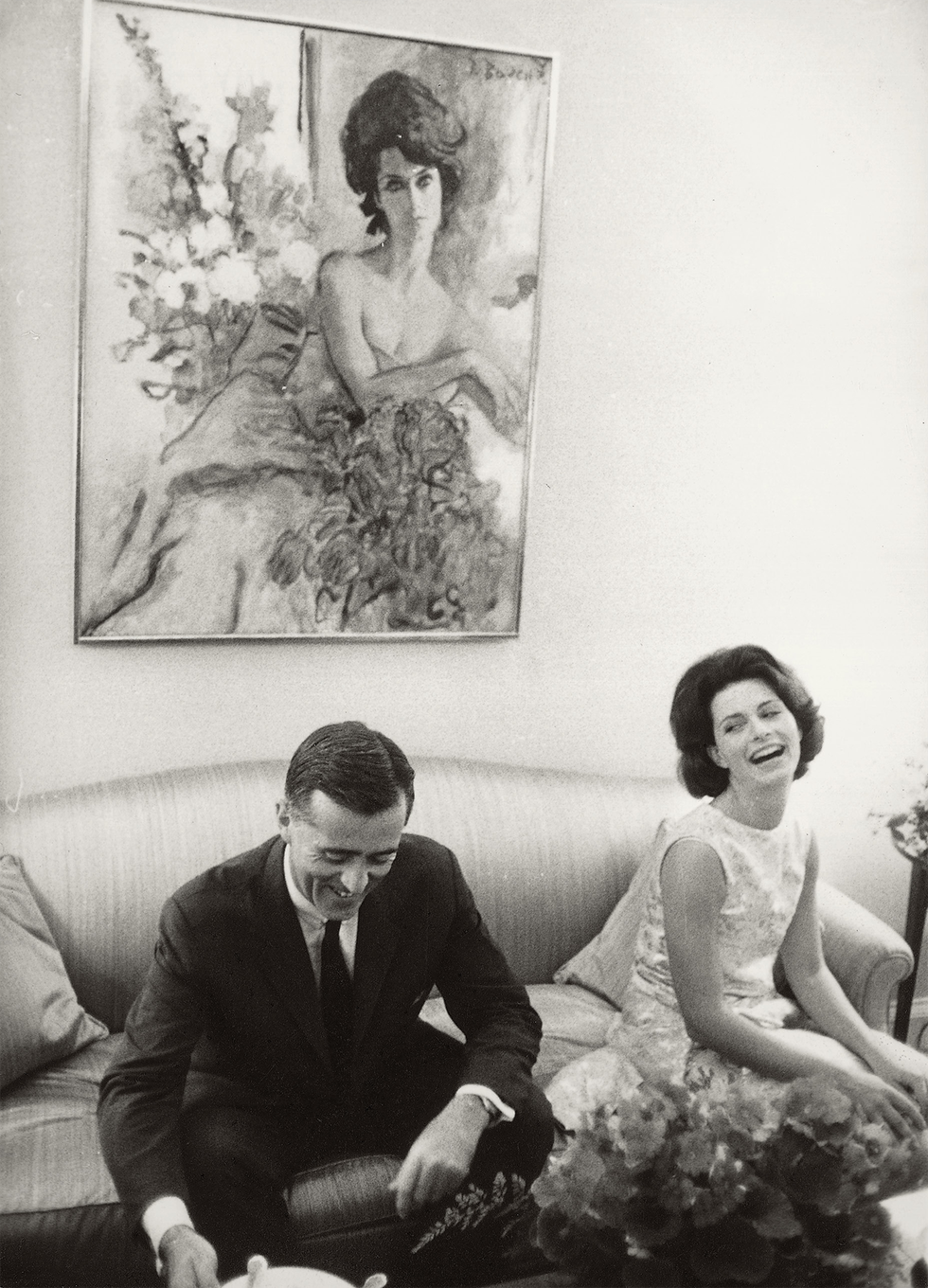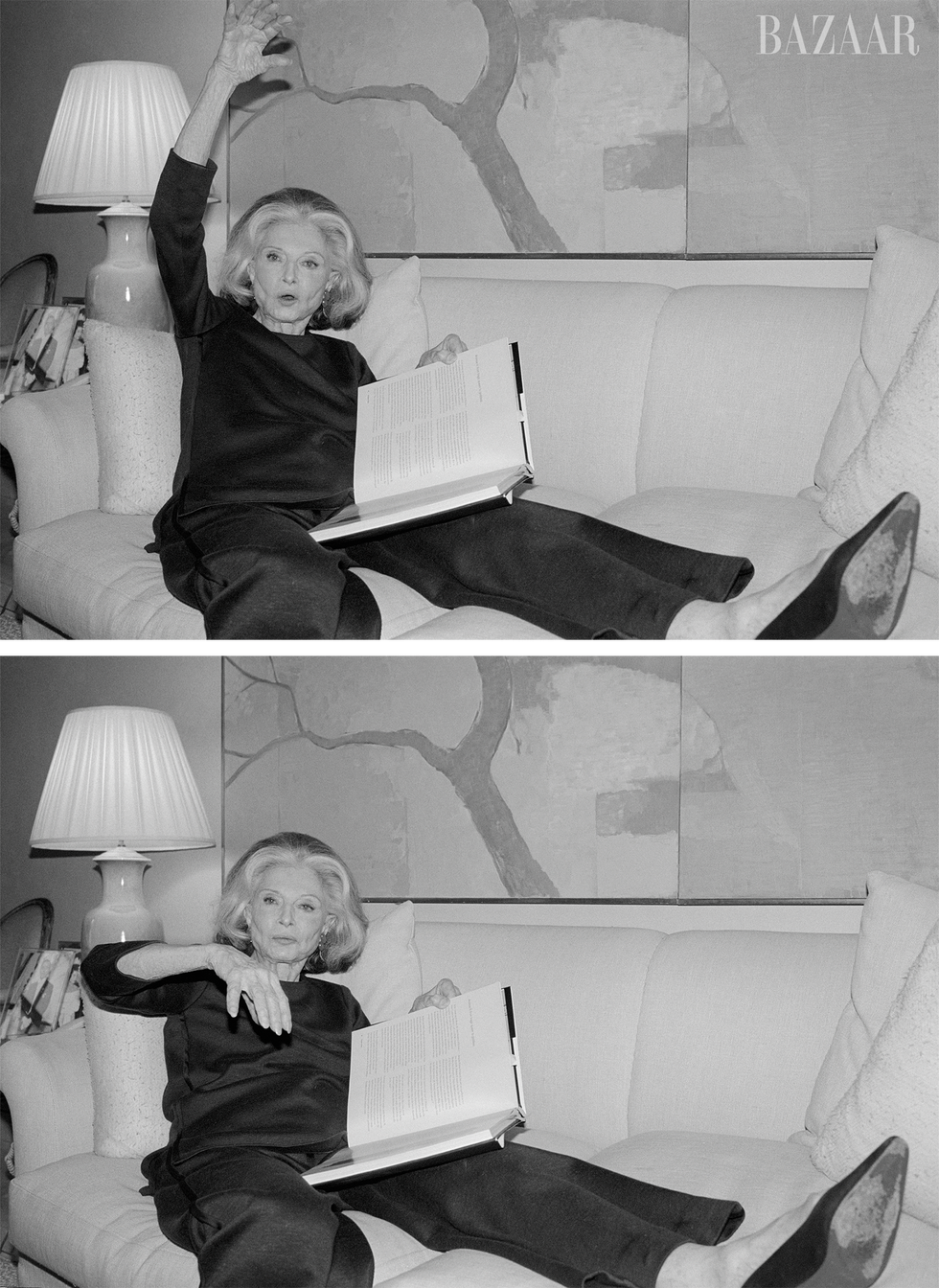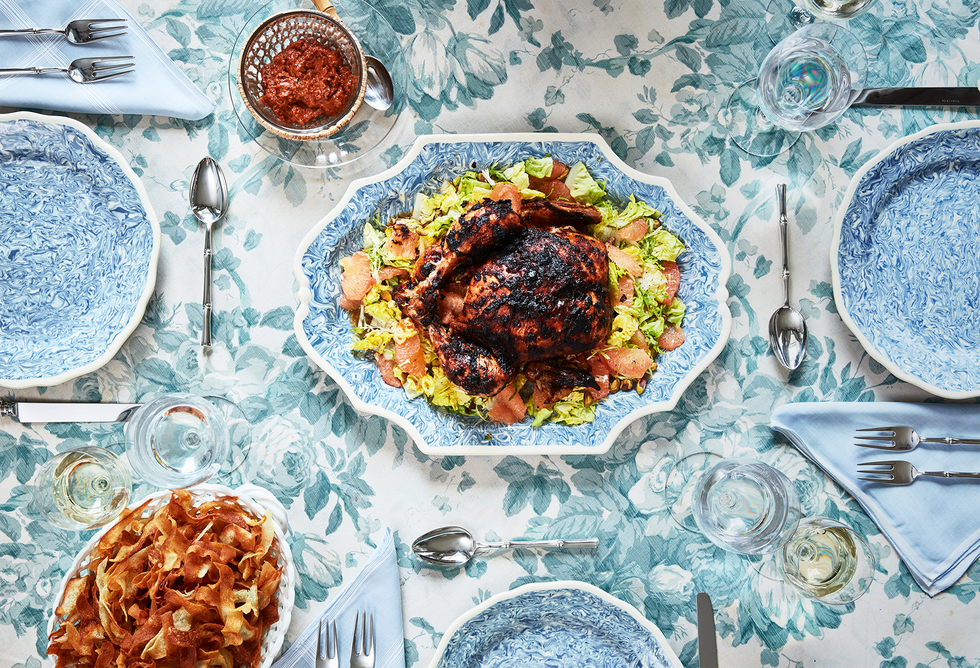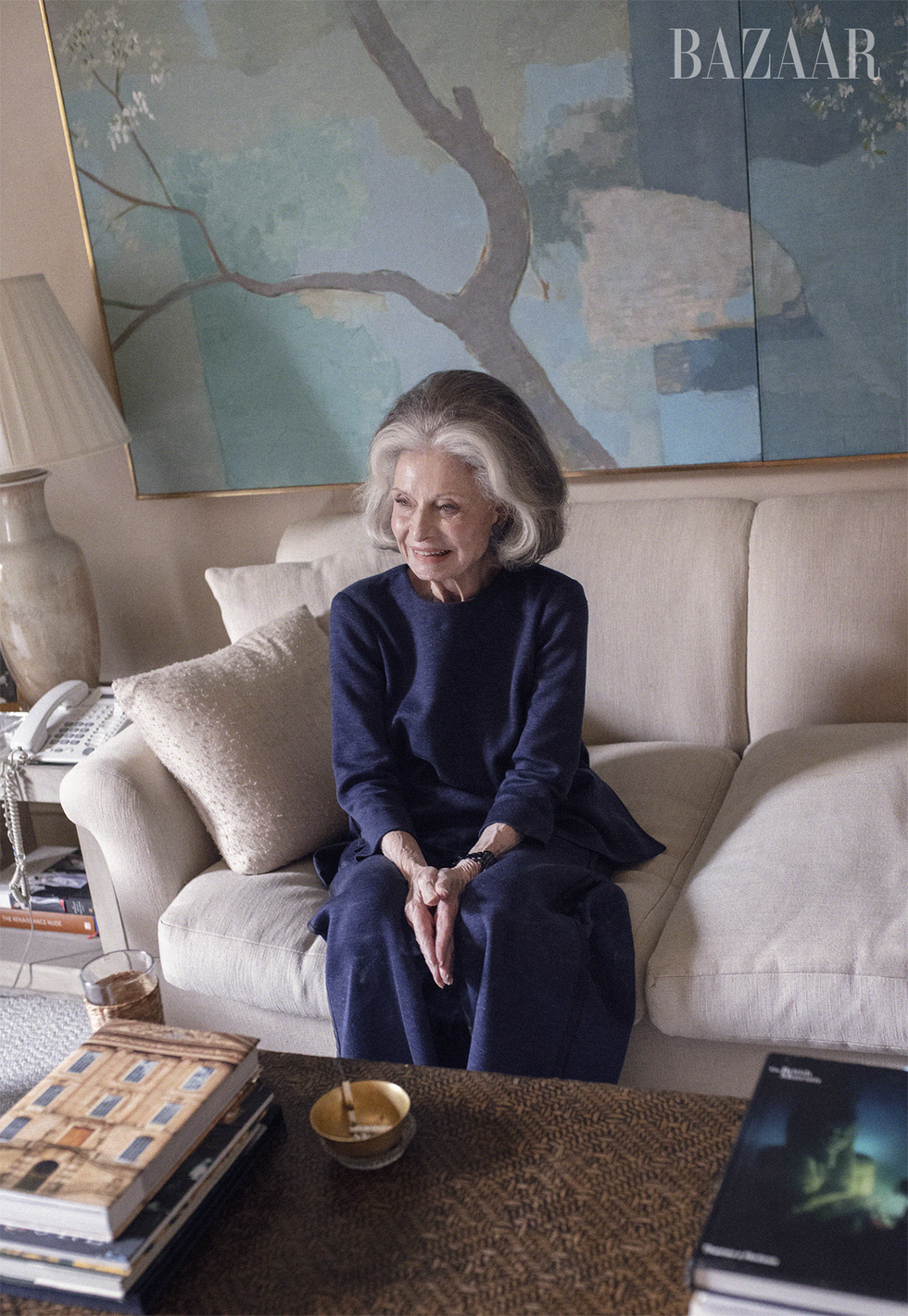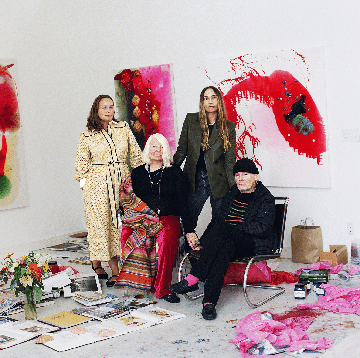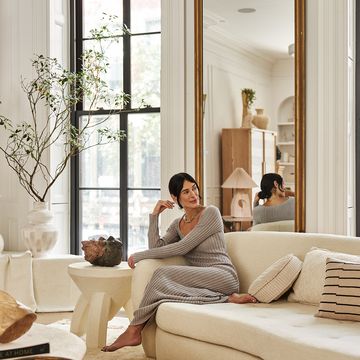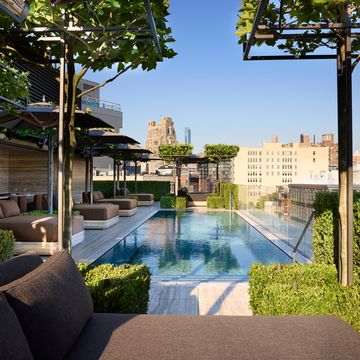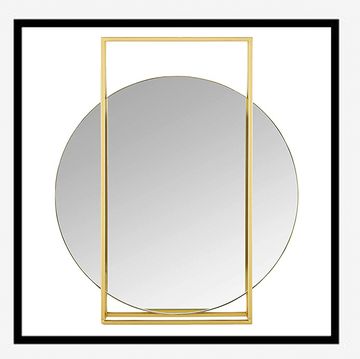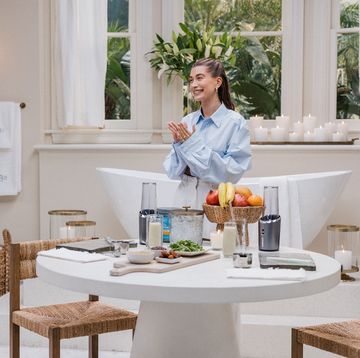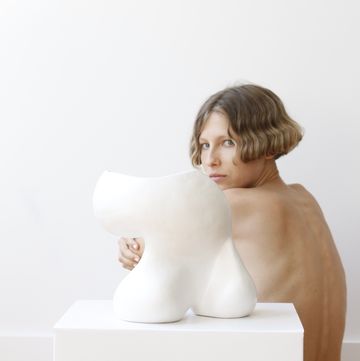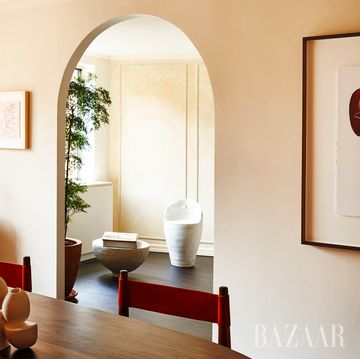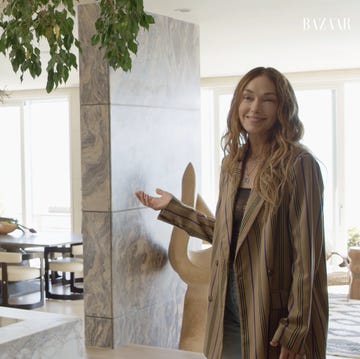Deeda Blair did not want to write a book. The society doyenne, medical philanthropist, and mental-health and brain-research advocate has lived an extraordinary life. She’s traveled the world, developed meaningful relationships with politicians, industry leaders, and cultural luminaries, and cultivated highly specific tastes. She is known in fashion circles for her elegantly restrained style and extraordinary couture collection; she maintained a close friendship with Hubert de Givenchy. She is a fascinating person, the very embodiment of style and substance. But she would much rather put two interesting people together—like an impressionist art collector and a brain researcher—and listen to them than talk about herself.
Nevertheless, in October, Blair will put out a tome, Deeda Blair: Food, Flowers & Fantasy, that can’t neatly be categorized. It can broadly be described as an entertaining book, and it’s certainly beautiful enough to put out on your coffee table. It’s full of gorgeous photos of her serene oyster shell-colored home in Manhattan and the art and places and people that have inspired her and informed her taste over the years. But then it’s also a recipe book: a compilation of menus she has refined over years of entertaining as the wife of William McCormick Blair Jr., who served as the ambassador to Denmark and then the Philippines during the Kennedy and Johnson administrations and was also a close adviser to Adlai Stevenson. (When William died in 2015, they had been married for 53 years.)
For decades, the Blairs were one of Washington’s preeminent social couples. They lived there from the late 1960s until the early aughts, hosting elaborate fundraising dinners when they weren’t abroad, and they continued in the same way, albeit on a smaller scale, when they moved to Manhattan in 2004.
More From Harper's BAZAAR

But Deeda was never just a hostess; a lifelong curiosity in the sciences and in giving back led to an impressive career fundraising for medical research, serving on the boards of the Scripps Research Institute, the American Cancer Society’s Research Committee, the Foundation for the National Institutes of Health (FNIH), and the Harvard AIDS Initiative. She worked closely for many years alongside her good friend Mary Lasker, who helped fund the National Institutes of Health, and was named vice president of the Lasker Foundation in 1965. For two decades, starting in the late ’80s, she served as a consultant for Sandoz pharmaceuticals. After Deeda’s only son ended his life following a long battle with depression, she focused her efforts on advancing research in the study of the brain and created the Deeda Blair Research Initiative for Disorders of the Brain at the FNIH in 2016. And that leads us back to the raison d’être for this book: All proceeds will benefit Deeda’s Initiative.
Here, Blair expounds on her entertaining philosophy, her outlook on fashion and interiors, and the science and research that she’s excited about right now.
"I'D RATHER THOUGHT it was the flowers that made a successful dinner party because I enjoy them and would always do them, but my husband was dead-on right when he said it’s the guests and the combination of the guests. We used to have to give so many large dinners. Once in Washington, we had to give a dinner for 90 people. Can you imagine seating that? We held some fundraising dinners for the International AIDS Conference in Washington [in 1987]. I remember someone said of one of our dinners, “My God, you’ve got the whole appropriations committee here!”
I think it’s fun if you introduce people who don’t know each other if you really sense that they would have similar interests.
I am, more than I should be, interested in food. I like to serve things that are not frequently served. A few are kind of inventions. I like to come up with things that are unexpected. Someone came over the other night, and I had a thick slice of a good tomato, and then scallions and crème fraîche and paddlefish roe. And then a shower of watercress. People said they’ve never had tomato with caviar before, and it’s a very good combination.
I always plan menus with dessert first. Don’t you? I don’t like desserts that look as though they came from a fancy bakery. I like them to look pretty different. I have a wonderful mold that swirls around, and it’s like a pyramid. I had the idea to fill it with ice cream and then scoop the inside out and fill that with ground chocolate, and then we put chocolate lace on the outside. And it’s spectacular looking, but it looks natural.
My parents took me on two separate trips around the world, and I always went to Paris first, just to have time to walk and go to bookstores and museums. I found that when
I was in my 20s, I could fit the [same sizes as the] models, so I would go to Balenciaga and Givenchy. I would often have to wait two months to get [the clothes], but it was worth it. There’s something, once you put on a couture suit or couture dress—you know that it is going to stay in perfect order and look great because you’ve had three fittings, you’ve adjusted it, and they’ve adjusted it.
I would always say, “I’d like to make it not exactly like the model,” and Hubert was fine with that. I didn’t have it so easily with Balenciaga. But I never got bored with wearing [the clothes] over and over again because they were just so much better. I don’t think there’s anything that wasn’t worn for three or four and sometimes for 10 or 12 years. It’s a matter of not being too observable, you know? What I do regret is the number I’ve given to museums and wish I had now. Suddenly nobody’s getting dressed.
Maybe the [Catholic-school] uniform that I complained about was a good idea in that it showed that it’s not awful to wear the same thing. And I often think when I see somebody who’s not terribly well dressed but has tons of clothes, if she had just restricted her shopping a bit …
I don’t like a lot of extra things in my life. Someone said, “What do you collect?” And I said, “I started out collecting porcelain.” That was fun and great. That for the most part has been kept. I remember there was a couple that came over—Washington friends—and she walked in and said, “Oh, this living room is the most serene and peaceful.” And I said, “Yeah, I love this room, and I often read in here.” And a few minutes later, he came in. He said, “Well, you’ve got a lot of space to hang pictures.” But I don’t hang pictures because I don’t have the kind of pictures I want. And I love the emptiness.
I end up writing a great many letters in my life. And I like the serenity of [the space]. I require a bit of aloneness. I don’t want too loud, too packed, because I’m trying to learn things that are more difficult than I was educated to do.
I feel that there are so many new tools and new equipment now that need to be added to the neuroscience vocabulary. Two years ago, I started giving awards, and the idea is thinking of the future and the next generation. Psychiatrists should have a knowledge of what is going on pre-clinically and in the research labs because they’re going to be using it sooner than before. You look now at what people are thinking about in neuroscience; they’re not just finding the right medication, they’re looking at a whole social and environmental situation of the patient. They’re looking at, for example, inflammation in people who are depressed, and they’re looking at the immune system. We gave one grant [to a researcher] who works on autoimmunity. A great many young people are interested in neuroscience, thank God.
The figures are increasing so hugely right now with Covid, and so many more young people are having real problems. I think we’ve seen, in the last two years, a great many people take an interest in mental health. Historically, federal money has been placed more on cancer research, heart research, and diabetes, but there’s a real need because now we do have more to do. But you need people who are inventive and want to explore things that have not been explored before.
Deeda Blair: Food, Flowers & Fantasy (Rizzoli New York) will be published in October 2022.

Leah Chernikoff is the former digital director of ELLE.
